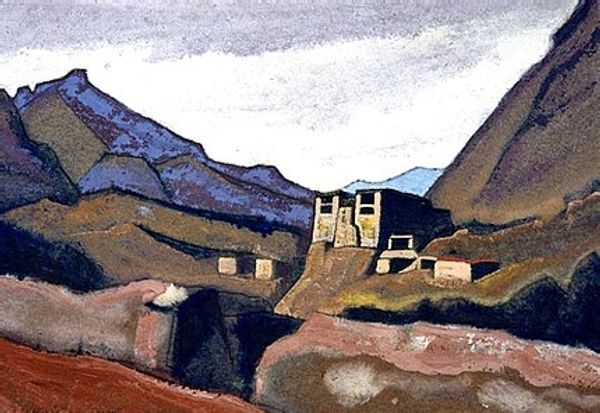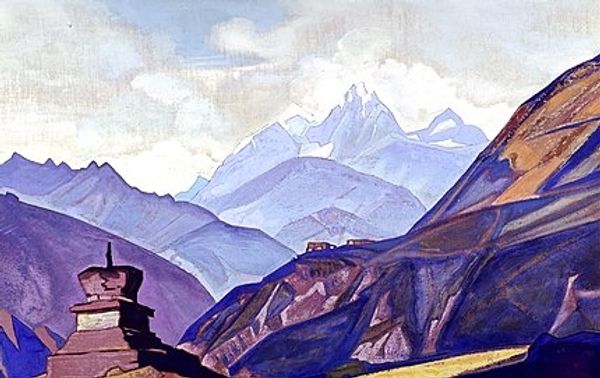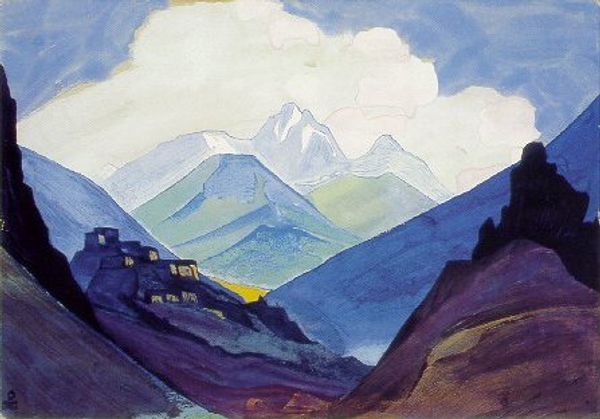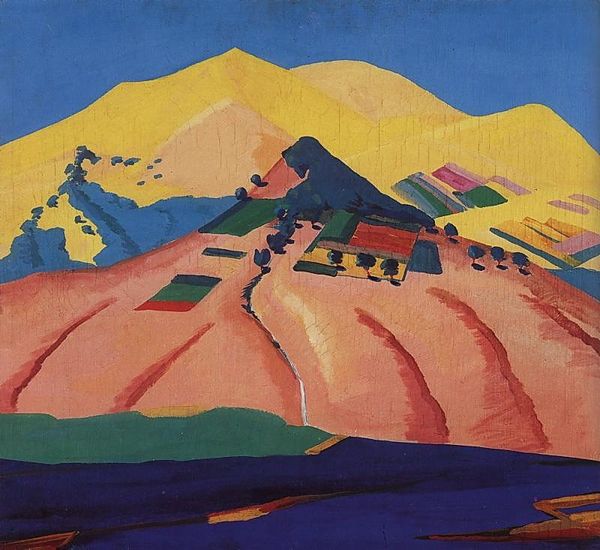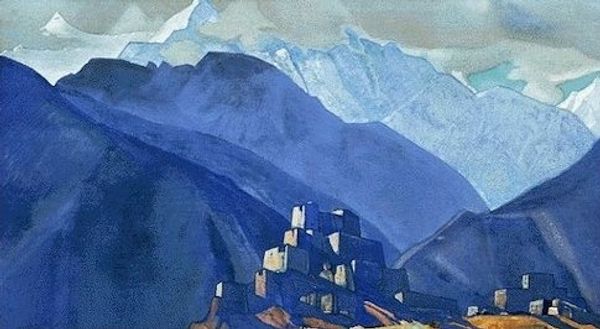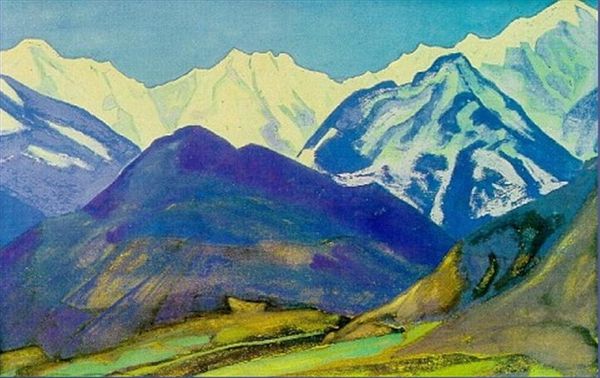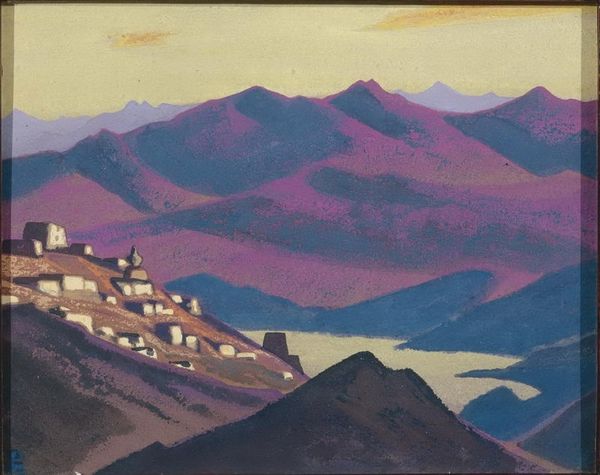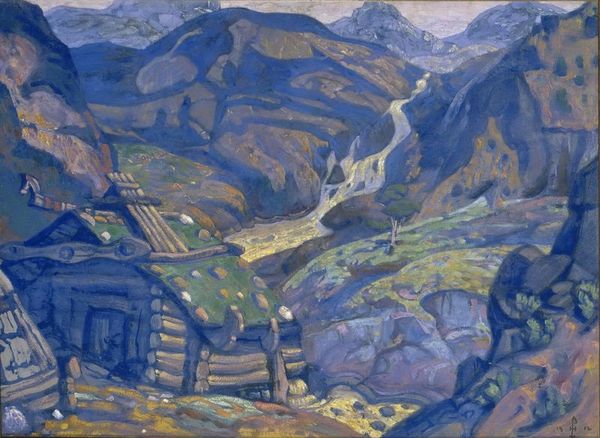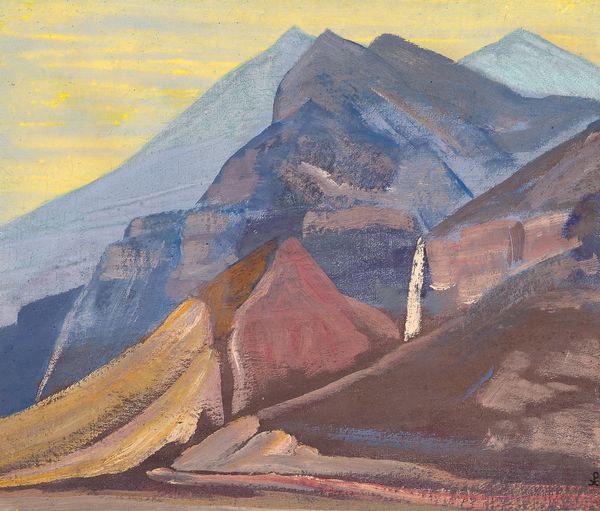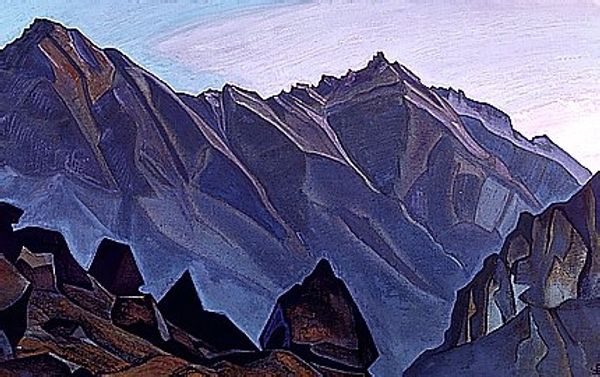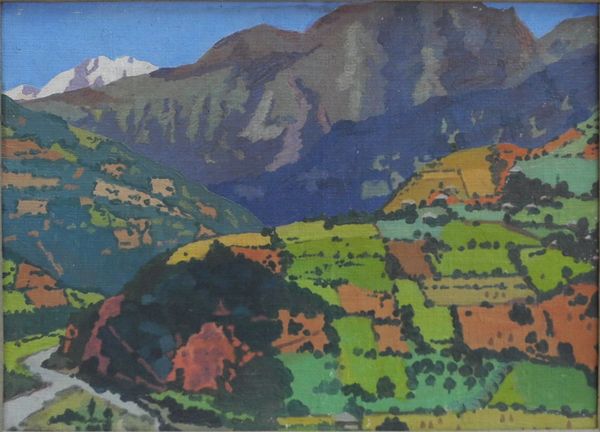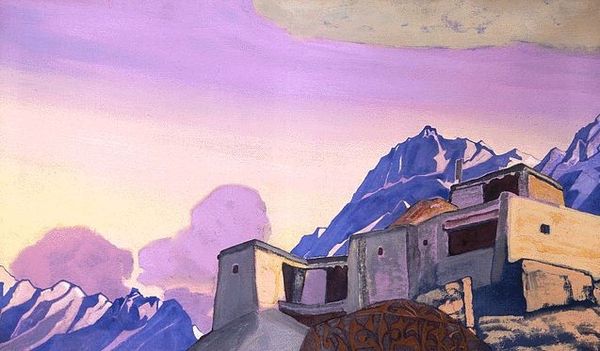
Copyright: Public domain
Art Historian:Editor: This is "Village Kardang. Lahaul." painted by Nicholas Roerich in 1932, using tempera and oil. It’s… striking. The mountains loom, almost aggressively, over the village. What do you see in this piece, particularly about Roerich’s choice of materials? Art Historian: Well, Roerich's combination of tempera and oil tells us a lot. Tempera, historically a ground pigment mixed with egg yolk, offers a matte, fast-drying surface, which he often layered over oil paint for texture and depth. Considering his interest in Eastern philosophy, do you think this layering is about more than aesthetics? Perhaps relating to process or some philosophical significance of materiality? Editor: That's fascinating, I hadn't considered the Eastern philosophy aspect in the choice of medium! Maybe he saw a connection between the painstaking labor of creating tempera from scratch and some sort of spiritual discipline? Art Historian: Exactly. Tempera demanded a mindful relationship with the physical components, echoing themes often seen in his artworks. The texture itself signifies the manual labor that is involved. We might consider the local cultures: Who had access to the materials? How did their production and application shape artistic outcomes and potentially express the value attributed to labor within this cultural setting? Editor: So, Roerich's landscape becomes more than just a pretty scene; it's a statement about the resources, labor, and the artistic tradition of that region. It really makes you wonder about the whole art production ecosystem. Art Historian: Precisely. By studying art through the lens of materials, labor, and social context, we recognize its intricate links to broader networks of exchange. Editor: Thanks, I'm definitely going to be examining paintings differently from now on!
Comments
No comments
Be the first to comment and join the conversation on the ultimate creative platform.
